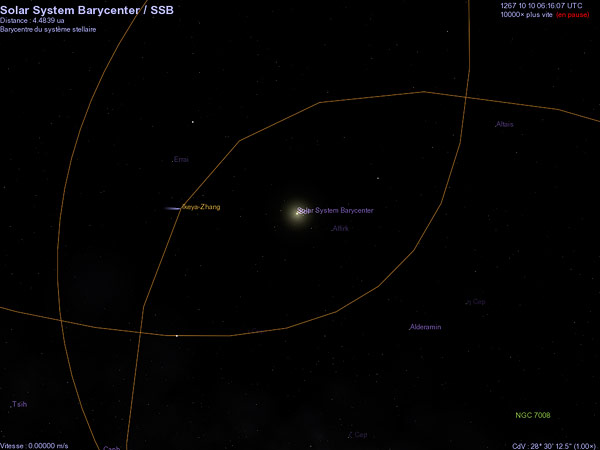It would be nice to use 100 points wisely instead of 100 points at equal distance...
Possible?


Cham wrote:Personaly, I'm using a pretty high number of points for all my orbits. I never tested rigorously the impact on the frame rate, but since it appears to be relatively minor on my system, I did not worry about it.

Code: Select all
OrbitPathSamplePoints 1024
RingSystemSections 256
ShadowTextureSize 1024
EclipseTextureSize 256t00fri wrote:From time to time I tend to write a post suggesting cubic splines for these problem zones...and then Chris L. tends to reply with arguments that I did not understand up to now
chris wrote:...There are some things that can be done to increase the performance of orbit rendering so that we can just send more points. In addition, I think that the code for rendering elliptical orbits can be modified to use more sample points in regions of high curvature.
chris wrote:t00fri wrote:From time to time I tend to write a post suggesting cubic splines for these problem zones...and then Chris L. tends to reply with arguments that I did not understand up to now
But how would you suggest we use splines? The answer would be obvious if graphics hardware could directly render splines, but current GPUs do not. The sample points for an orbit path are just calculated once, then reused every time the orbit is rendered. Rendering an orbit path is just a matter of sending the sample points to the graphics card. Calculating splines just adds an extra step: when rendering the orbit, the code would have to break the splines down into line segments first, then send them to the graphics hardware.
There are some things that can be done to increase the performance of orbit rendering so that we can just send more points. In addition, I think that the code for rendering elliptical orbits can be modified to use more sample points in regions of high curvature.
--Chris
t00fri wrote:chris wrote:t00fri wrote:From time to time I tend to write a post suggesting cubic splines for these problem zones...and then Chris L. tends to reply with arguments that I did not understand up to now
But how would you suggest we use splines? The answer would be obvious if graphics hardware could directly render splines, but current GPUs do not. The sample points for an orbit path are just calculated once, then reused every time the orbit is rendered. Rendering an orbit path is just a matter of sending the sample points to the graphics card. Calculating splines just adds an extra step: when rendering the orbit, the code would have to break the splines down into line segments first, then send them to the graphics hardware.
There are some things that can be done to increase the performance of orbit rendering so that we can just send more points. In addition, I think that the code for rendering elliptical orbits can be modified to use more sample points in regions of high curvature.
--Chris
How about "Non-Uniform Rational B-Splines" (NURBS) or perhaps simpler Bezier splines? I guess they can be rendered in OpenGL.
Cham wrote:There's a similar thing that should be done for the comets. Their model is extremelly crude ! It should adapt it's shape with the scale (distance to the user), like what is already done for the planets.
Cham wrote:On the contrary. The impact on the frame rate is HUGE ! Just try it !
I've already done it before and the effect is striking.
Changing the number of point affetcs ALL comets at the same time, and it doen't depends on the observer's distance.